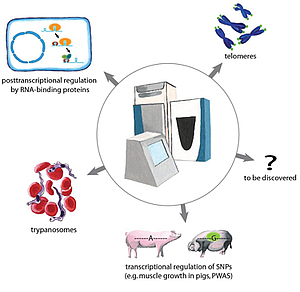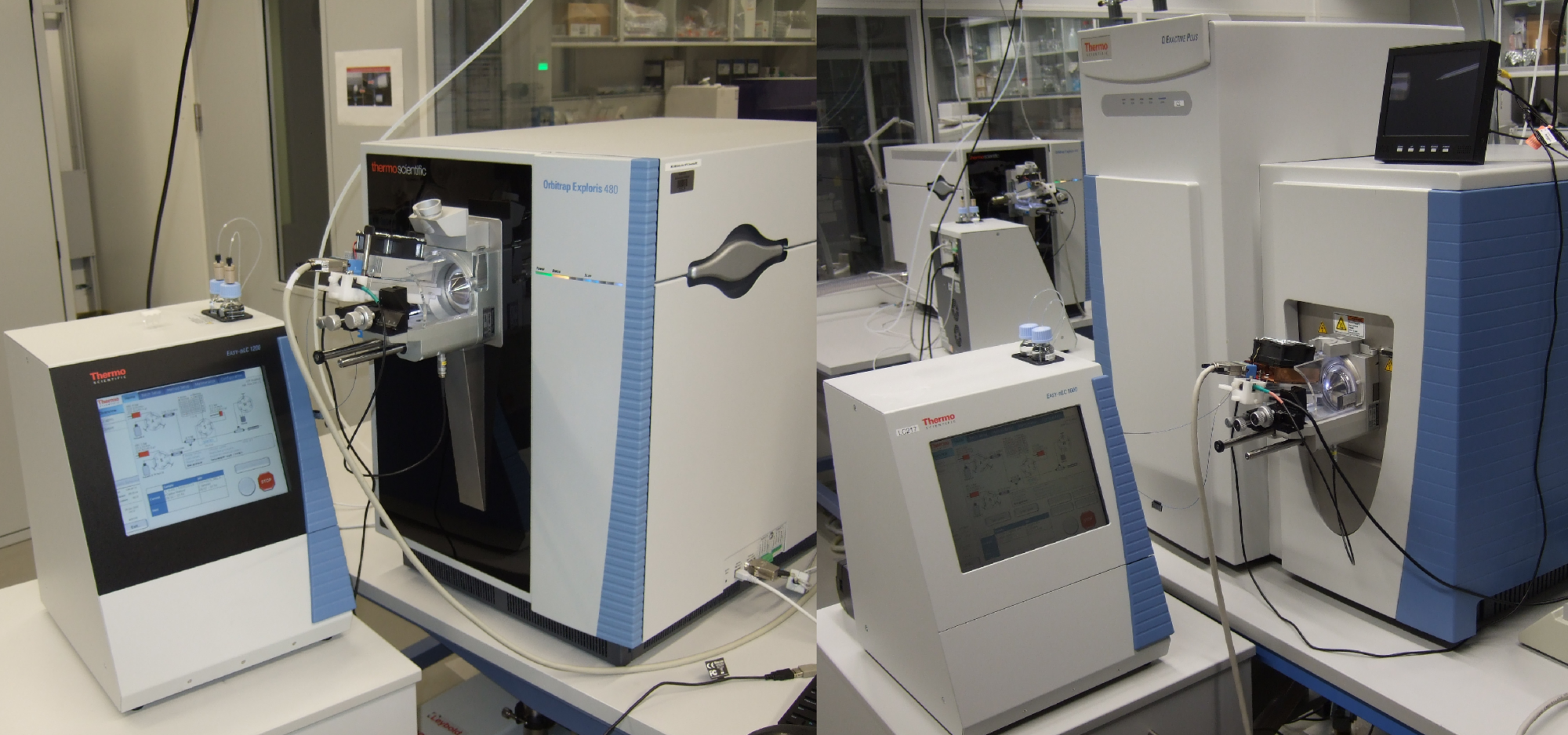
Mass spectrometry is a powerful tool for studying proteins in an unbiased and global manner. The current improvements in identification accuracy, sample throughput, and data analysis allow the streamlined application of proteomics in answering diverse biological questions. Our group applies quantitative approaches, which enables us to directly compare thousands of proteins in complex mixtures. These technologies allow us to study changes in protein expression but are also applied in interactomics to identify specific interacting proteins within a vast number of background binders. We combine omics workflows and classical biochemical and molecular biology techniques in several biological areas to advance our knowledge of cellular processes.
Telomere Biology
Using a quantitative interactomics screen with telomeric DNA as a bait, we identified several new telomeric proteins, such as HOT1 (Kappei*, Butter* et al., EMBO J 2013), ZBTB48 (Jahn*, Rane* et al., EMBO Rep 2017) and ZBTB10 (Bluhm et al., Nucleic Acids Res 2019) in mammals and TelAP1 in trypanosomes (Reis et al., Nucleic Acids Res 2018). Currently, we are also extending our study of telomeric proteins to other species. For example, we used a phylointeractomics screen to study putative telomere-associated proteins from ray-boned fish to mammals (Kappei*, Scheibe* et al., Nat Commun 2017). In the future, we want to deepen our understanding of the function of our previously reported telomere-binding proteins and characterise putative new candidates in diverse species.
RNA biology
Using quantitative interactomics, we have developed workflows to study RNA-binding proteins from an RNA-centric perspective (Butter et al, Proc Natl Acad Sci USA 2009; Scheibe et al., Nucleic Acids Res 2012). We have applied our workflows to look for RNA-binding proteins in diverse mRNA fragments, but also in non-coding RNAs, as exemplified by the human TERRA interactome (Scheibe*, Arnoult* et al., Genome Res2013). Current projects involve studying RNA-binding proteins in yeast, neuronal cells and stem cells with each focusing on different biological questions.
Epigenetics
We apply quantitative interactomics workflows to study proteins binding to different epigenetic marks such as DNA methylation or histone modifications. For example, we studied proteins binding to methylated histones (Bluhm*, Casas Vila et al., Proteomics 2016) in birds and recently identified a DNA methylation reader complex that enhances gene transcription in A. thaliana (Harris*, Scheibe* et al., Science 2018). At the moment, we are extending this analysis to other species.
Systems Biology
Working at the interface of transcriptomics and proteomics, we are currently exploring global gene regulation patterns. We have thus far studied developmental differentiation in trypanosomes, uncovering that transcriptomics in this parasite has no strong correlation to proteome levels due to polycistronic transcription units (Dejung et al., PLOS Pathog 2016). Furthermore, we generated a large-scale developmental proteome of Drosophila melanogaster (Casas Vila*, Bluhm*, Sayols* at al., Genome Res2017) showing that for a subset of the proteome, proteins can be stable long after transcription. Matching the embryonic time-course proteome dataset of this study, with a paired transcriptome, we applied ordinary differential equations (ODE) as a mathematical framework to correlate transcriptome and proteome during embryogenesis and successfully predicted translational regulators (Becker et al., Nat Commun 2018).
